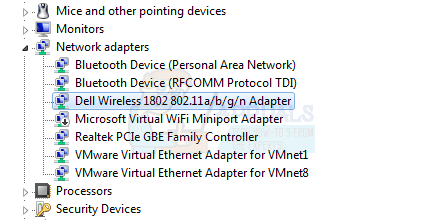How to Enable and Connect to 5GHz Wi-Fi on Windows?
With constantly changing standards and speeds, many users find themselves confused by the numerous wireless connectivity options available. One of the most perplexing issues is the dual-band problem, specifically concerning wireless networks that operate at 2.4GHz and 5GHz.

Even though your router can emit at both frequencies and is set up to do so (or just the faster 5GHz one), you might not find the network on your computer. This can be confusing, but the letters in the name of your router and wireless adapter after the 802.11 standard are crucial. Some routers and adapters work only on 2.4GHz, while others work with both.
To resolve this issue, follow these steps. Be aware that you might need to buy new hardware if you are set on using 5GHz.
Method 1: Check if Your Router and Wireless Adapter Support 5GHz Wireless
- Research Your Router and Adapter: Perform some online research for your specific model. Identify your router model and visit the manufacturer’s website to check if it supports 5GHz by looking for ‘supported frequencies’ or ‘supported radio bands’. If the router supports 5GHz, it will be stated in its specifications.If the information isn’t available, check the letters after 802.11 and consult the following information to see if you can use the 5GHz frequency:
- 802.11a – 5GHz
- 802.11b – 2.4GHz
- 802.11g – 2.4GHz
- 802.11n – 2.4GHz and possibly 5GHz
- 802.11ac – 5GHz
- 802.11ax (Wi-Fi 6) – 2.4GHz and 5GHz

Generally, a router labeled 802.11a/g/n, 802.11ac, or 802.11ax (Wi-Fi 6) will work at 5GHz. However, a router labeled 802.11b/g/n has a slim chance of supporting that frequency, and you might need to upgrade.
- Check Your Wireless Adapter: If your router supports 5GHz connectivity, check your adapter next. Open Device Manager by pressing the Windows key, typing Device Manager, and opening the result.
- Locate Your Wireless Adapter: In Device Manager, expand Network Adapters and locate your wireless adapter. Check its name for any information about the radio bands it supports. If it doesn’t specify, search for the model online and check the manufacturer’s website.
- Command Prompt Check: Alternatively, check your adapter’s 5GHz capability through the command prompt. Press Windows + R and type “cmd“. In the command prompt, type “netsh wlan show drivers“.
Here’s a screenshot to guide you through the command prompt check:

If your adapter supports 5GHz, proceed to the next method. If not, you will need to change the adapter to enable 5GHz wireless functionality.
Method 2: Enable 802.11n Mode on Your Adapter
If your hardware is compatible with 5GHz, but you still can’t use it, it might be disabled. Manually enable it using these steps:
- In Device Manager, locate your wireless adapter.
- Right-click it and select Properties.
- Under the Advanced tab, select 802.11n mode. Set the value to Enable.
Click OK and restart your computer. You should now see your 5GHz network.
